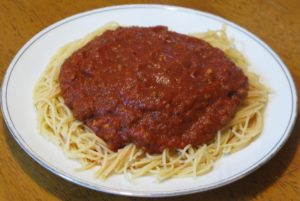
Graham Kerr, the gallant Galloping Gourmet
I want to chat about food diversity, but first, what is the difference between a gourmet, a gourmand or a foodie? Having lived more than a few decades, I am amazed at the changes in so many areas, including the English language. I will leave what I term the “hijacking of words” to another post, but the changes in terms about food are fascinating. Let’s start with the three in my title, gourmet, gourmand and “foodie.” Gourmet was long the term for someone with a discerning palate. It implied someone who tasted his food as an oenophile tasted fine wine rather than like a wino who chug-a-lugged jug burgundy. For those of you old enough to remember, Graham Kerr’s “The Galloping Gourmet” hit TV with an energetic, non-traditional cooking show. He was not like Julia Child, standing in front of the camera, stiffly instructing the viewers how to prepare some difficult dish like beef bourguignon, but a dashingly dressed, decent-looking, youngish man who liberally used cream, clarified butter and wine to add zest to his dishes. He did it with a great deal of flair and wit in front of a live audience, with no retakes. He would raise a glass of wine to his lips before commercials and would seem to be finishing a healthy (or unhealthy) swig when the camera returned to him. However, he actually imbibed very little during the show. It was, if you’ll pardon the pun, all for show. At the end of each episode, he would be joined by someone from the audience (normally female) and the camera would zoom in on their ecstatic faces as they sampled his culinary triumph as the show closed. While it took a few years for the food-show craze to fully hit America, Graham Kerr was the pioneer. Gordon Ramsey, Bobby Flay, and Guy Fieri, you owe a lot to Graham Kerr.

Gourmand or glutton? You say tomato . . .
Gourmand is a word whose meaning has definitely evolved. Originally, it meant a glutton. Now it is defined by Merriam-Webster as “one who is excessively fond of eating and drinking” and also as “one who is heartily interested in good food and drink.” Wikipedia, that font of all knowledge, gives “a person who takes great pleasure and interest in consuming good food and drink” as its first definition, with “glutton” as almost an afterthought. In a nation that is known for overeating, saying someone is a glutton has become almost as forbidden as a racial slur. “Excessively fond of eating” is the acceptable term, but glutton is not. But making a euphemism so that a word no longer has bad connotations is to weaken the language in the cause of being politically correct.

The food photo fad. If food is only a hobby, then is collecting picture trophies more important than eating it?
Now there are foodies. The term originally came from an article by Gael Greene in the New York Magazine in 1980 and has since come to such common usage that it’s almost pass. Wikipedia defines a foodie as “a person who has an ardent or refined interest in food and who eats food not out of hunger but due to his interest and hobby.” A hobby? Like building model planes? Whatever. And what’s the difference between a foodie and a gourmet? Again from the Big W, a foodie is “not as elitist as a gourmet, more discriminating than a glutton.” Like a wine drinker who drinks Two-buck Chuck (now a little more pricey), but not box wine? So what does all this have to do with food diversity? Food has become more than something to eat. It’s become fashionable. And the more diverse and strange your tastes, the better. It shows you are cool.

The size of a half order of spaghetti at Vince’s in the 1960’s
I grew up in the 1950’s and 1960’s. My parents moved to sunny California from Kentucky, not exactly a multi-ethnic state back then. But my mom learned to do some rather bold dishes here, at least for that time. Our neighbors were from Oklahoma and taught her a few Tex-Mex dishes. Tacos, enchiladas and what was termed Spanish rice entered our diet. Since the rice was not really Spanish style, I suppose it was a euphemism since Mexican had less “class” back then. That was odd since Mexican restaurants were not termed “Spanish.” Not logical, but that’s the way it was. Our neighbors’ daughter-in-law was Italian-American and taught my mom to make spaghetti and meat balls as well as lasagna. I remember how my mom would start making the spaghetti sauce in the morning and the wonderfully pungent aroma of basil and oregano would fill the kitchen as it simmered through the day. I was a picky eater, but loved those “foreign” dishes. We also had corned beef and cabbage, which is an American tradition on St. Patrick’s Day, but not really Irish. On the rare occasions we went out to dinner (we were not wealthy), many times we went to Mexican or Italian restaurants, no doubt because they were often cheaper. Vince’s Spaghetti in Ontario served a huge plate of spaghetti with meat sauce (their half order, no less) for 65 cents! Although Shakey’s Pizza Parlors started the pizza craze in California in the 1950’s, their’s were not really Italian style, so I don’t include them in this post. While there also were Chinese restaurants around, we didn’t go to them. I don’t remember any other “foreign” cuisine restaurants around back in the day.

Dar Mahgreb- great atmosphere, even if not great food
As I became an adult, I was more ready to try new tastes. My broadening of international food experiences started with Chinese food when I was in college. The restaurant I went to was Cantonese, but then I didn’t know different regions of China had different styles of cooking. Szechuan is my favorite now, with its bold chili peppers and garlic spicing. The next, if I remember correctly, was Japanese. It was Miyako’s on Town and Country Road in Orange and apparently is no longer around. This was in the early 1970’s and sushi was not known to the general populace, so raw fish was not on the menu. I did love their sukiyaki and miso dressing on the salad. Then came Moroccan. A small chain of Dar Mahgreb Restaurants were built to look like imitation Alhambra palaces, with plush cushions on low couches for seating, it was a bit of experiencing North Africa in Southern California. You ate with your hands out of a communal platter of food. It was fun dining, even if the food was a little sweet for my taste. A belly dancer added to the atmosphere. The one where my wife and I sat almost on the floor to eat was in Palm Springs. Alas, it is now closed and I understand the last one of the chain in Los Angeles is too. I say that not because I loved it, indeed I have not eaten at a Dar Mahgreb since the 1970’s, but it is the passing of a memory. Another dining expedition of that decade was an Indian restaurant, name long forgotten, in Riverside, CA. I do not remember what I had, but it was not good. It took years before I tried Indian food again and loved it, but not at that now-closed establishment.

Sushi and sashimi can be found all over America now.? Few people say, “Raw fish, Eew!” anymore.
Jump forty years in time to the present. Change can be good or bad, but the diversity of cuisines available now is definitely good. Not all cuisines are equal or even, to my palate, good, but having the choice is. Now finding Thai, Indian, Japanese, Greek, Persian, Ethiopian, Lebanese, Jewish and many other dining options is not confined to major cities. Not only that, Mexican, Italian and Japanese restaurants have greatly expanded their menus. No longer are tacos, enchiladas, tostadas and tamales of my youth the limit of choices in a Mexican restaurant. Carne aside, chimichangas, empanadas and Tex-Mex fajitas as well as burritos with a multitude of fillings are the norm with more exotic items on the menus of many places. I had never even heard of mole or chipotle in the old days. And Italian used to mean tomato-based sauce. Now, there is cream-based alfredo and my favorite, pesto. Penne is so much easier to eat and saves many shirts from permanent stains, but only long spaghetti was available for so many years. Risotto? Never heard of it in the previous century. Now, when you say “Japanese food,” sushi comes to mind, but few would have tried raw fish forty years ago. Delightful chimichurri sauce was only in Argentina when I was growing up, but now is on many menus. America often puts its own spin on the different cuisines, but the variety has expanded wildly. And that is good.

The heck with the view, let’s eat.
Returning to the title of this post, am I a gourmet, a gourmand or a foodie? To say I am a gourmet sounds presumptuous to me. I don’t have that trained of a palate. I know what I like, but that doesn’t mean I’m an expert on flavors. I love hot and spicy, but hate sweet. That, in itself, probably disqualifies me to so exalted a title. Am I a gourmand? Harkening back to the original definition as being a glutton, I hope not. I do enjoy food, but try not to overindulge. At least not on a regular basis. So I guess that, by default, I’m a foodie. I do have an interest in food and don’t always eat just because I’m hungry. My interest is more refined than the person who raves about Egg McMuffins or Taco Bell tacos, so I am not at the bottom of the food-discernment chain. I enjoy many cuisines and some of the more esoteric varieties as well as the common ones. Do I approach my dining experience “not as elitist as a gourmet, more discriminating than a glutton?” I suppose so. But is food merely a hobby. Not for me. I love it too much.
